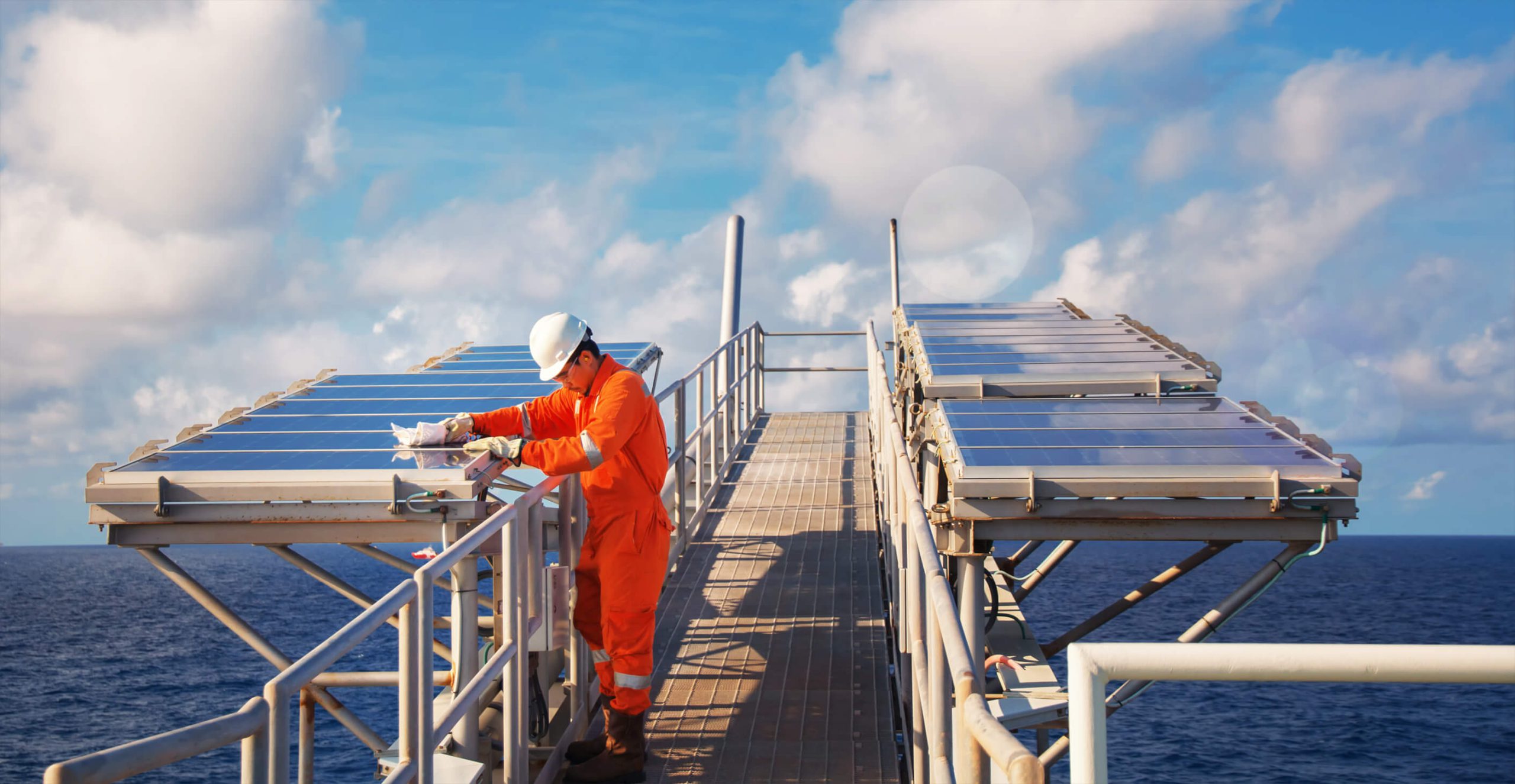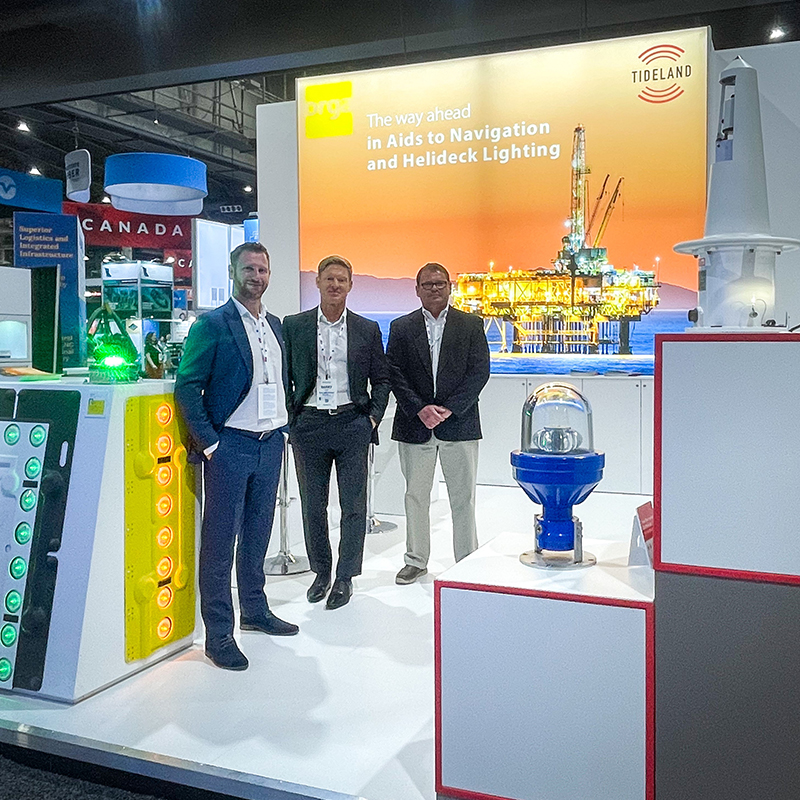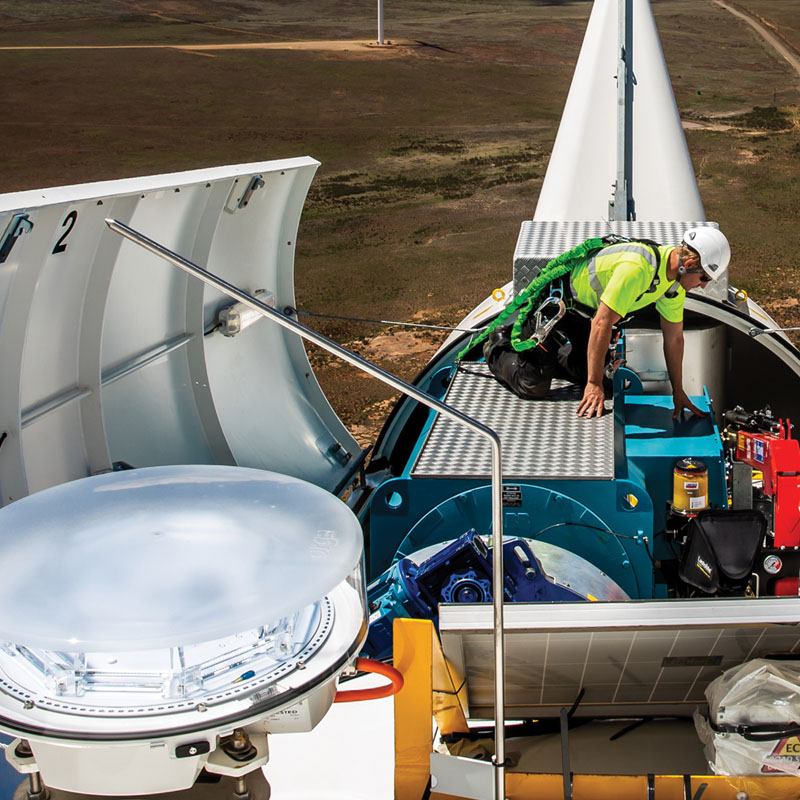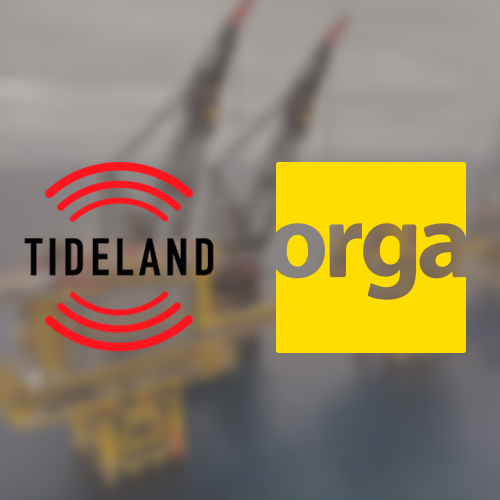A recap of our ‘Solar Power Series’ in LinkedIn!
Our Solar Power Insights on LinkedIn received a lot of interest and positive feedback. Read a recap of the updates here!
Around 1300 platforms are located in seas and oceans around the world. Some lay in remote areas, cut off from conventional power sources. Solar power can prove to be the most effective way to power the critical loads of these platforms, especially in areas with plenty of solar radiation.
Orga is expert in the field of creating solar systems especially designed to power critical loads in remote and hazardous areas.
Solar systems in all sizes
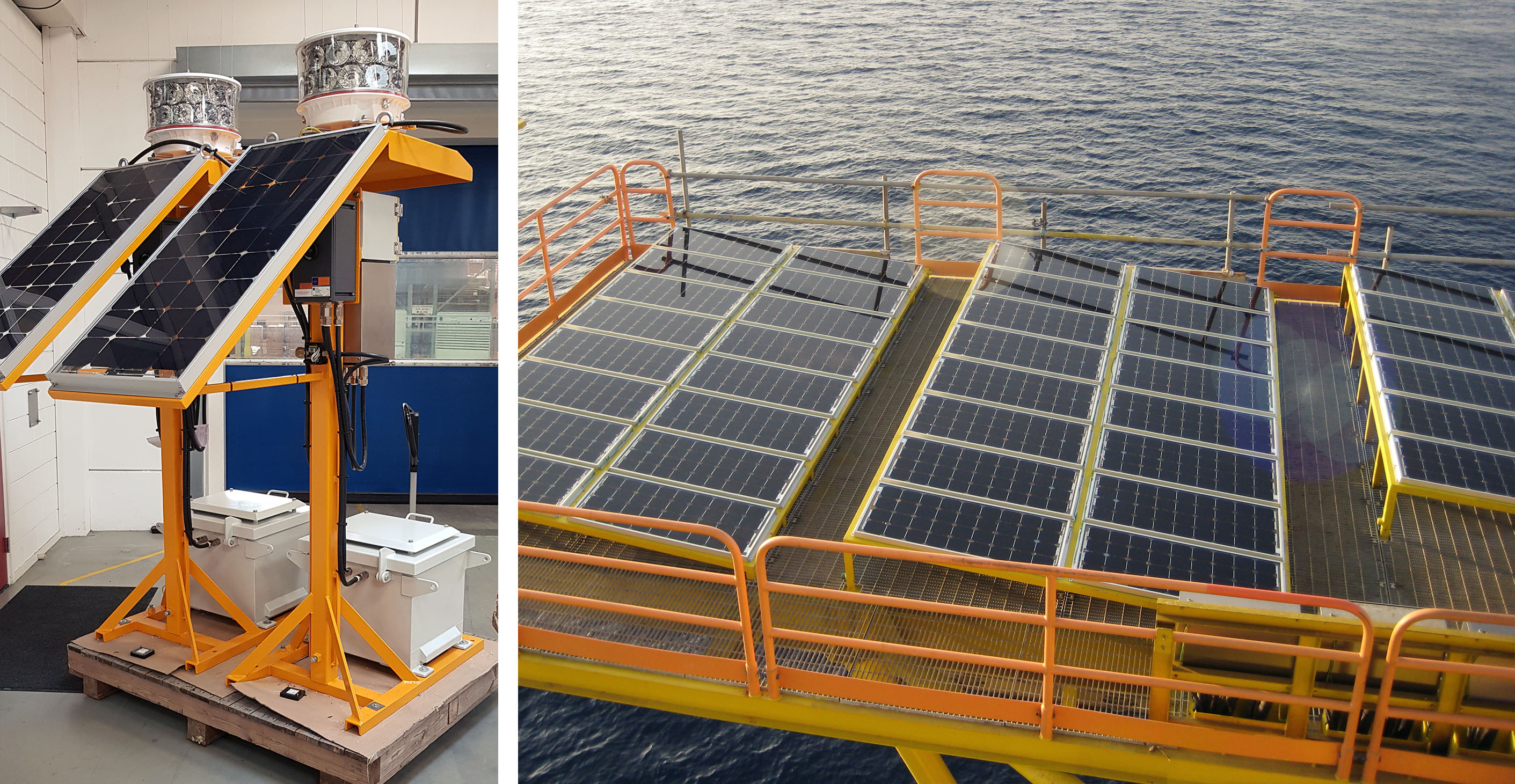
The need for power varies per project and platform. It can range from power for Aids to Navigation lighting, to generating power for daily operations for the whole platform. The size of the solar system is custom engineered to fit the needs of the specific offshore asset or remote location.
In some cases the required power can be generated by a standalone solar skids. This skid in the image above power an LED light that keeps assets visible for marine traffic. If more power is required an larger solar system is engineered. Our standing record is a system consisting of (standing record: 150 panels). These panels together power the critical load for an entire off-grid platform.
All of our solar solutions are suitable for gas hazardous areas.
Is solar reliable enough to power our critical loads offshore?
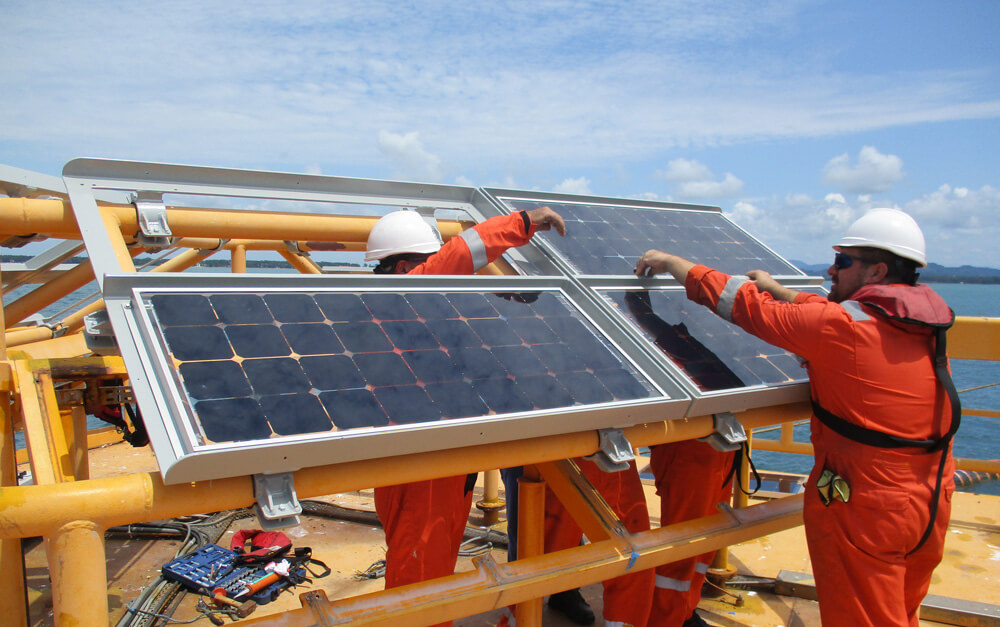 When the location is suitable, it definitely is! When designing a solar system, extensive research on the location and asset is done before we start designing. With the help of satellite data we verify if the amount of solar radiation on the geographical location of the asset is high enough.
When the location is suitable, it definitely is! When designing a solar system, extensive research on the location and asset is done before we start designing. With the help of satellite data we verify if the amount of solar radiation on the geographical location of the asset is high enough.
Next we look at the general efficiency of the asset. How much power will need to be generated to supply the critical loads of the asset and how large will the solar system need to be to facilitate this.
Last but not least we consider the footprint of the solar system. Space is limited and extremely valuable offshore. The power that needs to be generated is carefully balanced with the available space on the asset.
Taking all factors in consideration, we engineer a bespoke solution that fits perfectly into the daily operation of our customers.
Maximizing yield by using the right equipment
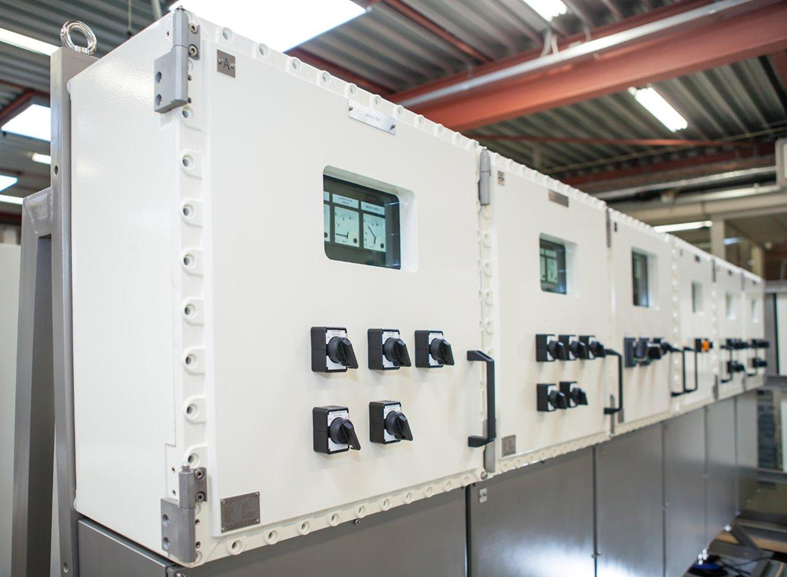
Choosing the right solar regulator for your system and specific situation can give up to 45% more yield on solar panels. The solar regulator converts the generated power and transfers it to the batteries, where it is stored. There are different regulators available using different techniques. We can advise you on the most efficient regulator for your situation.
Our solar power expert
Marco van de Leer:
“A pulse width modulation (PWM)
solar regulator is the traditional
controller and can be a good choice
when the loads are small.
But in most installations the
maximum power point tracking (MPPT)
solar regulator is the best choice
for optimized charging of the batteries.
The MPPT solar regulator
converts up to 45% more
of the solar energy compared
to traditional controllers.”
The right Solar Panels
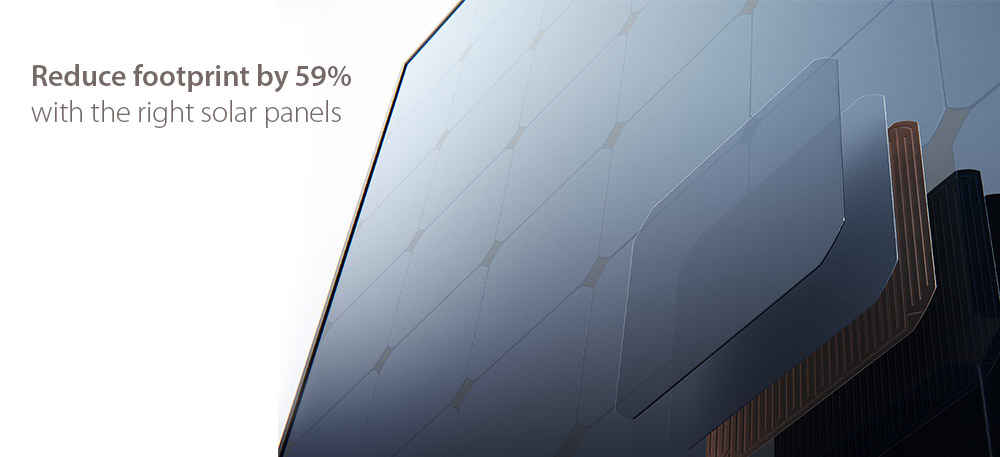
Combining the right regulator with good quality solar panels can save you space, reducing the solar panel area with 59%!
Pay attention to these characteristics when choosing solar panels:
– Efficiency: There are solar cells on the market that have an efficiency of more than 20-24% resulting in 26% more power per square meter.
– Used materials: What materials are the panels made of? Choose panels with corrosion resistant materials like anodized aluminium mounting frame and stronger materials like solar cells with copper backplate
– Area classification: Has the area a gas explosion hazard? Explosion proof solar panels certified for Ex zone 1 or 2 shall be selected.
Click here to view the efficient Ex zone 1 OSP108EX solar panel that we use in our systems.
Case Study | 76 Solar panels powering the critical load of the Anggerik platform
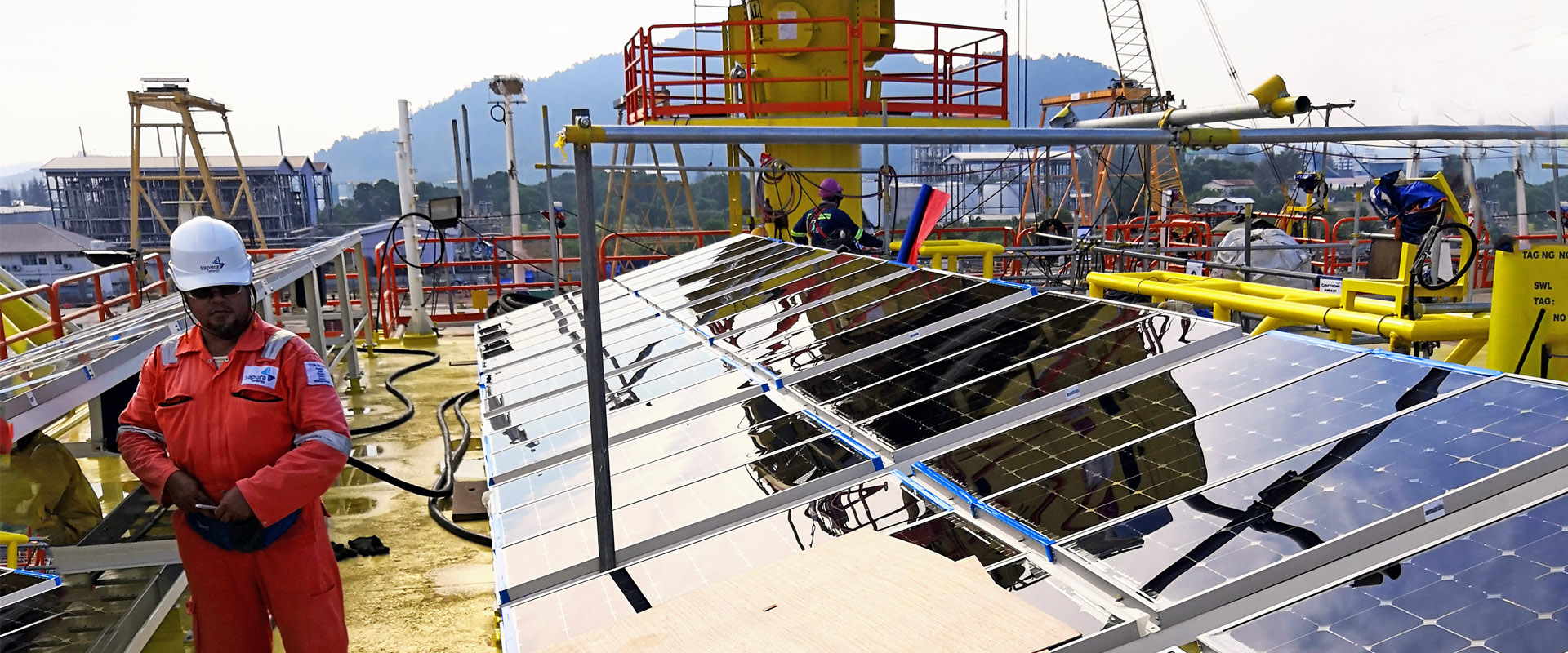
The Anggerik platform of customer Hess lays 186 miles offshore peninsular Malaysia. An Orga solar power system will be installed in 2019 assuring the continues load of 750 Watt is powered every day. Reliability, cost effectiveness and a small footprint were key requirements in designing this solar system.
Because of the isolated location, the system generates and stores power that can supply the critical loads for 5 consecutive days. The available space, critical load and the influence of the sun were skillfully balanced in the engineering of this self-supporting system.
The generated power coming from the panels will be converted by six maximum power point tracker solar regulators and stored in three battery boxes. The power that accumulates in the batteries can power the critical load of the Anggerik platform for five days, maintaining production and a safe situation for our customer in the gas hazardous area.
Learn more about our collaboration with Hess on the creation of this offshore remote power system.
Or find out more about our solar solutions in general.
Every week Orga posts updates on LinkedIn. Sometimes we do series about topics in our field of expertise. Follow Orga’s Linkedin page to see our updates too!
